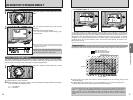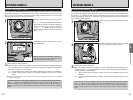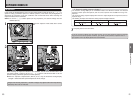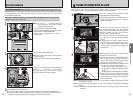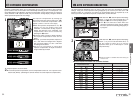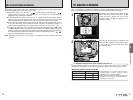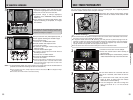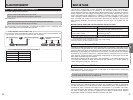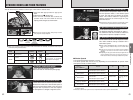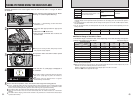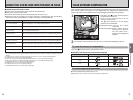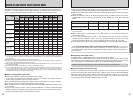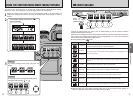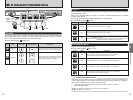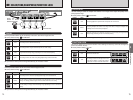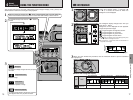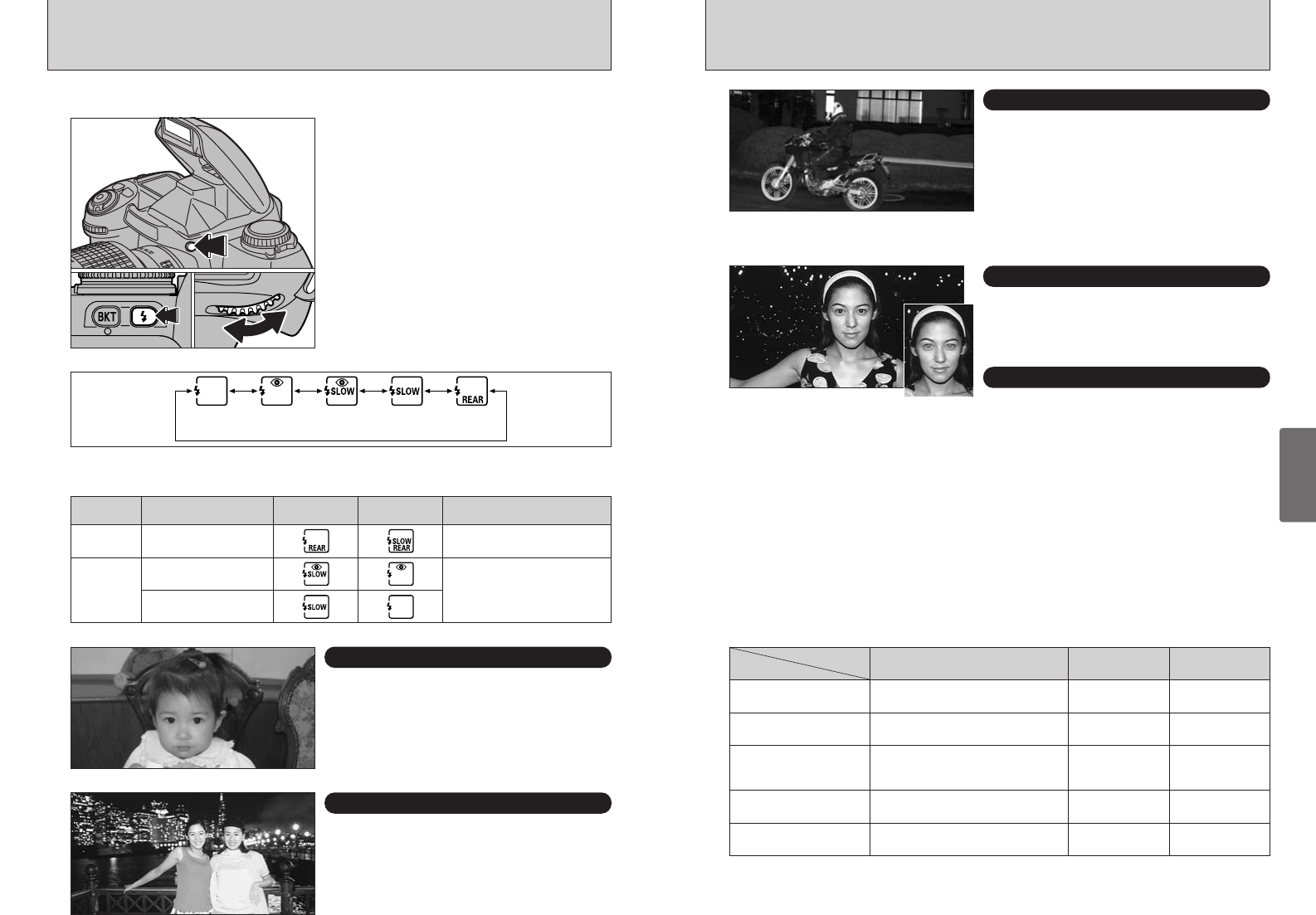
62 63
SYNCHRO MODES AND THEIR FEATURES
Advanced Photography
3
Can be used in all exposure modes. In the “P”
and “A” exposure modes, a slow shutter speed
is used. The flash fires just before the shutter
closes. This mode is effective in capturing the
subject's movement as a flow of light in a way
that looks natural.
●
!
Rear-Synchro cannot be used with a studio flash system
since the correct synchronisation cannot be obtained.
p>
REAR SYNCHRO MODE
You can select any of 5 modes to suit the type of shot and the desired effect.
Front Synchro Red-eye
Reduction
Red-eye
Reduction
Slow Synchro
Slow Synchro Rear Synchro
●
!
When some exposure mode and synchro mode combinations are selected, the synchro mode may be
automatically changed subsequently.
Exposure
mode
P or A
Synchro mode
Display during
selection
Display after
selection
Operation
Rear Synchro
Automatically set to Slow
Synchro.
S or M
Red-eye Reduction Slow
Synchro
Slow Synchro
Slow Synchro is cancelled
(shutter speed not changed.)
Can be used in all exposure modes.
Select this mode for normal flash photography.
p
FRONT SYNCHRO MODE
Can be used in the “P” and “A” exposure modes.
Because this mode uses a slow shutter speed, it
captures the background while at the same time
firing the flash to produce a shot that captures
the atmosphere of a twilight or nighttime scene.
p<
SLOW SYNCHRO MODE
Can be used in all exposure modes.
The Red-Eye Reduction lamp lights for approx. 1
sec. before the flash fires in order to reduce the
red-eye effect in photos of people or animals.
p?
RED-EYE REDUCTION MODE
Can be used in the “P” and “A” exposure modes.
This mode combines red-eye reduction with a
slow shutter speed.
●
!
When a Nikon SB-28/28DX, SB-27 or SB-26 flash unit is
used, the red-eye reduction lamp on the external flash
fires.
●
!
Take care to ensure that the camera and the subjects
(people) in the shot do not move until the shutter is
released.
●
!
Depending on the type of lens mounted, the light from the
red-eye reduction lamp may not reach the person, in
which case the effect of the red-eye reduction lamp is lost.
p?<
RED-EYE REDUCTION SLOW SYNCHRO MODE
■ Shutter Speeds
Exposure mode
Synchro mode
n
Front Synchro
P or A S M
1/125 to 1/60 sec.
(automatically set by the camera
✽1
)
1/125 to 30 sec.
1/125 to 30 sec.
and
™
m
Slow Synchro
1/125 to 30 sec.
(automatically set by the camera
✽2
)
——
,
Rear Synchro
Automatically set to Slow Synchro.
1/125 to 30 sec.
(automatically set by the camera
✽1
,
✽2
)
1/125 to 30 sec.
1/125 to 30 sec.
and
™
.
Red-eye Reduction
1/125 to 1/60 sec.
(automatically set by the camera)
1/125 to 30 sec.
1/125 to 30 sec.
and
™
/
Red-eye Reduction
Slow Synchro
1/125 to 30 sec.
(automatically set by the camera
✽2
)
——
✽1 When a Nikon SB-26, SB-25 or SB-24 flash unit is used, the synchro selector on the external flash unit sets
the shutter speed.
✽2 Because a slow shutter speed is used, a tripod should be used to prevent camera shake.
The synchronized shutter speed is 1/125 sec.
The shutter speeds that can be set vary depending on the combination of synchro mode
and exposure mode, as shown below.
1Press the flash pop-up button to pop up the
flash.
2Hold down the “a” button and,
3Turn the main command dial to select the
synchro mode. The icon shown on the top
display panel changes as shown below.
●
!
When you are not using the flash, always keep it stowed
away to prevent battery depletion.
02
01
03



